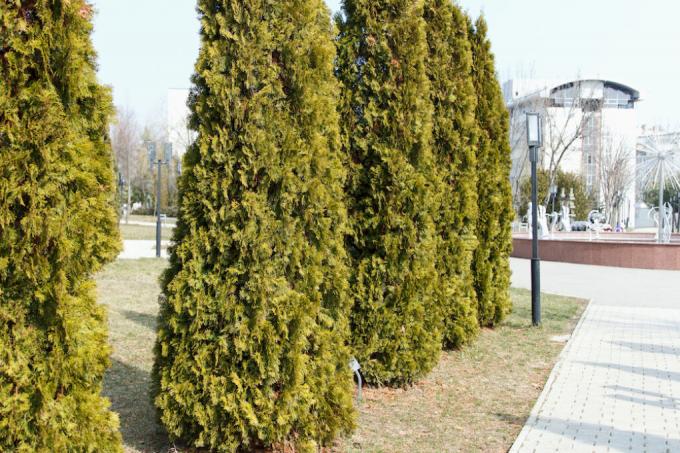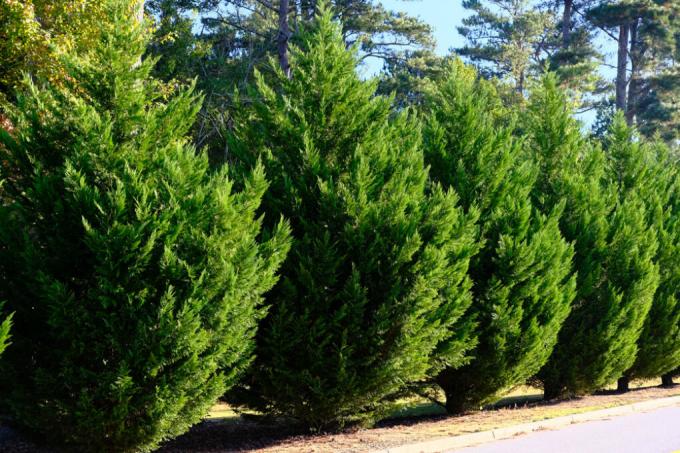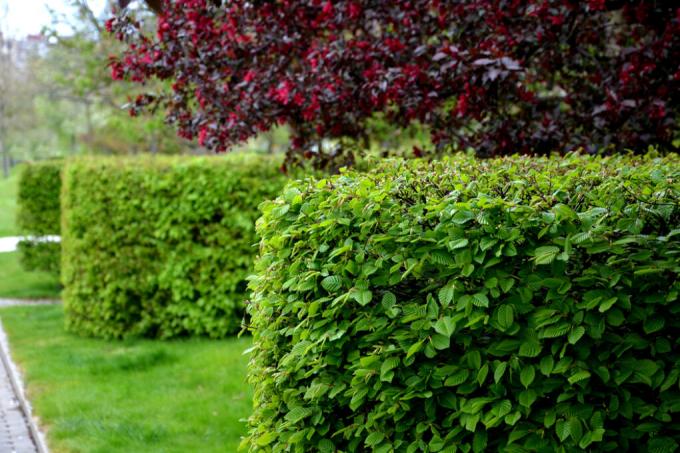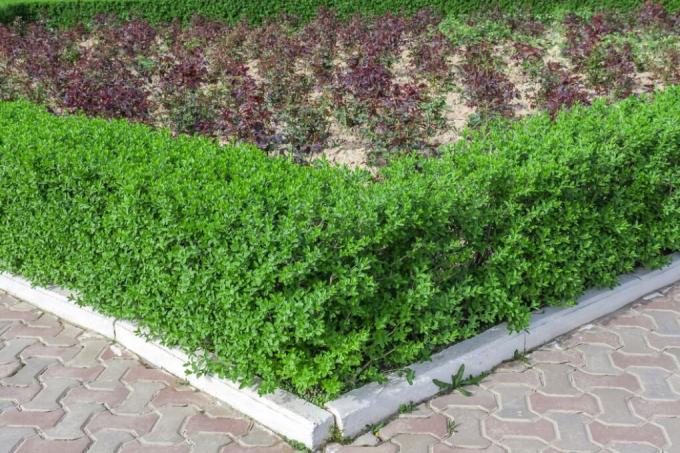AT A GLANCE
Should I choose a yew or thuja for my hedge?
Yew and thuja are both evergreen hedging plants with advantages and disadvantages. Yew trees offer ecological benefits, good privacy protection and are easy to care for, but highly toxic. Thujen are just as easy to care for and versatile, but only slightly poisonous and ecologically less valuable.
What are the advantages and disadvantages of the yew tree?
One yew hedge from the local yew species Taxus baccata has many advantages over Thuja, but above all that of ecological harmlessness. In contrast to the tree of life, the yew gives shelter and food to birds and other small animals. Furthermore, the conifers score with these benefits:
- evergreen
- hardy
- grows very densely, good privacy protection
- very pruning compatible, suitable for topiary
- easy to care for and undemanding
- shade tolerant
also read
In addition, the plant looks varied and attractive in autumn due to the dark green needles and the bright red fruits.
However, and this is a major disadvantage, all parts of the yew plant are highly toxic and can lead to fatal poisoning in humans and animals.
What are the advantages and disadvantages of thuja?
Trees of life also grow very tall and dense, which is why they are ideal for hedges. Other benefits of the cypress family include:
- evergreen
- very well tolerated by cuts
- easy to care for and adaptable
- dimensionally stable even without cutting
- for sunny to partially shaded locations
- versatile
- large variety with different needle colors
But beware: Many gardeners do not know that thuja is also poisonous to humans and animals. Although the toxicity of this hedge plant is not as pronounced as that of the yew, it cannot be dismissed out of hand. In addition, Thuja grow extremely slowly with an average of 10 to 15 centimeters per year and only have a small ecological benefit.
Are there non-toxic alternatives to yew and thuja?
Also other popular ones hedge plants such as cherry laurel or box are poisonous, although to a small extent. However, if you want to be on the safe side, you can use non-toxic alternatives. Also uncomplicated to care for and evergreen are, for example:
- Fargesia bamboo: does not form any runners, so there is no need to fear that it will proliferate
- Serbian spruce: compact, dense and fast-growing, resistant to diseases and very frost-hardy
- Canadian hemlock: tolerates pruning, frost hardy, tolerates shade well, overhanging growth
Although not evergreen, hornbeams and beeches are still very suitable for hedges and non-toxic.
Can you mix yew and thuja in a hedge?
With gaps in an existing hedge, the question sometimes arises as to whether these can also be filled with trees of a different species. For example, are yews suitable for closing gaps in a thuja hedge? Basically, this is a good idea, since yews harmonize well with thujas and there are fewer problems with growth and growth. Have root competition as young arborvitae. In addition, the needs in terms of location, soil moisture and care are similar. In addition, both species grow very slowly. However, be sure to pay attention to the recommended one minimum distance between the individual plants.
Tip
Where is the thuja originally native?
In contrast to the native yew (Taxus baccata), the tree of life or thuja does not come from Europe. There are different species that are native to North America (Occidental arborvitae, Thuja occidentalis) or Asia (Oriental arborvitae, Thuja orientalis). Like the yews, the thujas also belong to the botanical order of the conifers.








